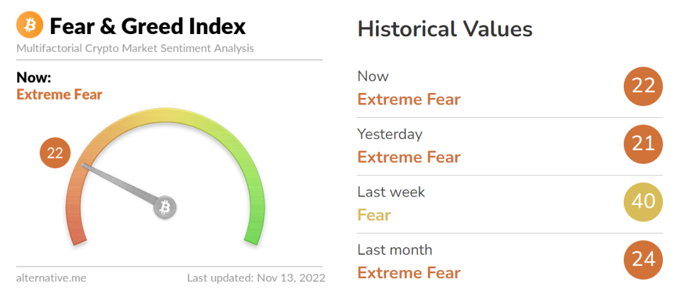Crypto Market Sentiments
Crypto for Advanced
Other articles
The dynamic nature of cryptocurrencies packs the market with moneymaking prospects, since the value of digital assets is moved by multiple factors, including industry environment, project success, statistical trends and market sentiments.
Sentiments express the opinions, views & feelings about something, which can be held by an individual or shared within a group of people. They showcase prevailing attitudes, and in the world of crypto, sentiments represent the aggregate attitude towards a digital asset or industry.
Crypto markets grow & decay in correlation with people’s thoughts and moods, and this applies to the overall crypto market capitalization as well as the value of specific cryptocurrencies. Sentiments evaluate the collective psychology of investors and traders, and they’re portrayed via certain indicators such as The Bitcoin Fear & Greed Index and the Bull & Bear Index.
After collecting the views of market participants and being up-to-date with the latest revelations, the sentiment of a specific cryptocurrency or industry becomes clearer. Yet, it’s best not to rely on market sentiments alone when determining your next investment move.
Besides existing trading knowledge and experience, take fundamental & technical analysis into consideration alongside market sentiments analysis, as sentiments are typically fueled by infatuations and aversions which can be short-lived.
Why Do Market Sentiments Matter?
The concept of sentiments exists in all financial markets, especially in the realm of cryptocurrencies; the currencies of the people. Briefly, market sentiments in crypto mirror the consolidated opinions & feelings about a crypto asset or industry. They provide insights on how distinct market conditions are being viewed by its participants.
With that being said, every individual views a certain market/asset differently, and since the majority of traders and investors are human beings, attitudes & opinions tend to greatly vary. Nevertheless, widespread sentiments are quite significant, as they have the power to build market trends & alter the duration of market cycles.

Dogecoin does a great job at exemplifying the power of social media. The value of the dog-meme coin backed by none other than Technoking and Chief Twit Elon Musk is heavily influenced by the man himself and his following. Tweets like “Dogecoin to the moon!” can propel the coin’s price by a two-fold or even a ten-fold surge in a matter of hours, depending on the hype surrounding it.
While the price of cryptocurrencies is affected by fundamental factors like macroeconomic conditions and technical factors like moving averages, market sentiments emerge as a school of thought which aims to understand the views & attitudes towards something.
Ultimately, investors & traders consider market sentiments when constructing their strategies, just like how they would with fundamental or technical analysis. Sentiments aid in the discovery of profitable market opportunities, but how would one analyze thoughts and feelings?
Performing Market Sentiment Analysis
Emotions and attitudes can’t be quantified and analyzed. Right? Wrong. To analyze market sentiments, you can either entrench yourself within the communities of the assets or projects which interest you, or you can investigate them from afar, but not so far.
Typically, social media platforms are the hubs where you would find the discussions and ideas of a cryptocurrency’s community. Discord servers or Twitter accounts are the usually the go-to for crypto fans, so one could track mentions and hashtags via data collection software to discover how hyped something is.
Hypes can be bullish or bearish. If many traders are investing in something for its value to grow, this is bullish behavior. When they want to bring something to the ground, the bears are striking away.
Another way to analyze market sentiments is by exploring recent blogs on renowned media outlets, or by noting popular search queries via Google Trends. For example, if the search volume of “Why is FTX crashing?” is very large today, one can deduce that the market sentiment towards FTX is predominantly negative.
Market Sentiment Indicators
If you don’t have time to analyze trader sentiments yourself, there are valuable indicators which you can utilize. One popular indicator would be The Bitcoin Fear & Greed Index powered by alternative.me which analyzes the sentiments for Bitcoin.

This indicator weighs 5 different factors, with “0” indicating extreme fear and “100” representing extreme greed:
1. Volatility – minimum and maximum price points in a given timeframe
2. Market momentum/volume – buying and selling volumes
3. Social media – frequency and speed of certain hashtag usage
4. Dominance – market cap share
5. Google Trends – related search queries
At the time of writing this article, there is extreme fear in the crypto market, fueled by high inflation and widespread pessimism resulting from vicious downturns and temporary uptrends.
Another popular indicator of market sentiments is the Bull & Bear Index developed by Augmento. The AI-powered initiative quantifies crowd psychology to determine the current bearish-ness or bullish-ness of traders, based on trending topics and discussions on Reddit, Twitter & Bitcointalk.
Summary
Sentiments are indicative of omnipresent attitudes towards certain assets or asset groups, but at the end of the day, sentiments are a collection of emotions, ideas & feelings which either evolve or devolve over time. Trader sentiments are typically short-lived in the world of crypto, and as they say, what goes up must come down, eventually.
It’s fundamentals which keep expectations intact, and not necessarily the opinions of other people. On the other hand, it is those opinions which give act as a pedestal to a project, or act as the demise to its prospects.
Therefore, it’s a great idea to include market sentiment analysis in your trading strategy, which should also take into account the fundamental and technical factors that determine the intrinsic value and future direction of the cryptic assets in your portfolio.


